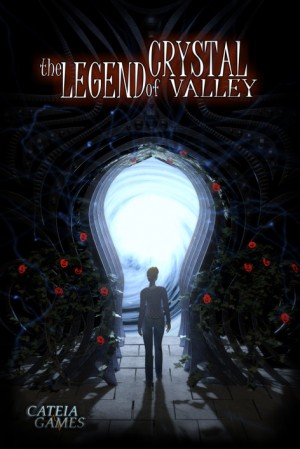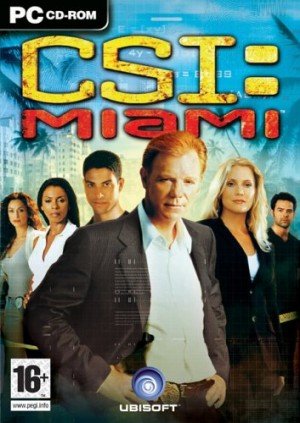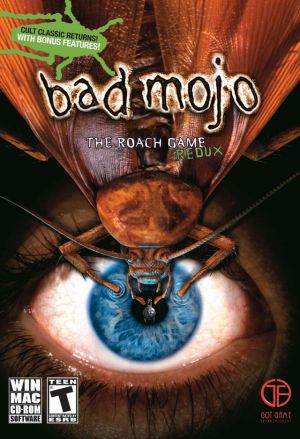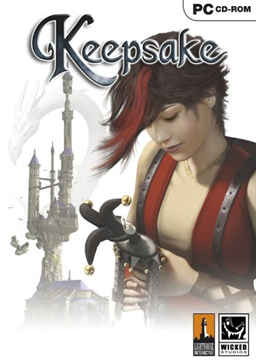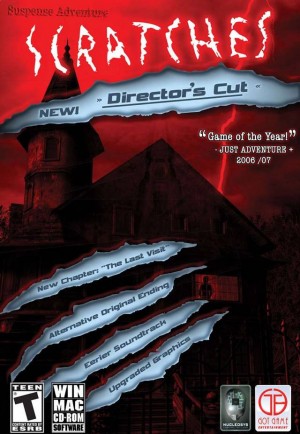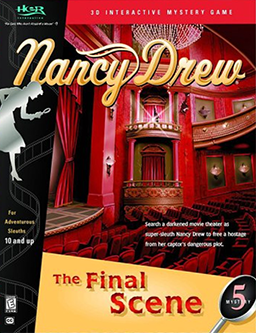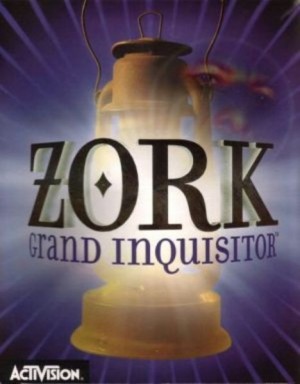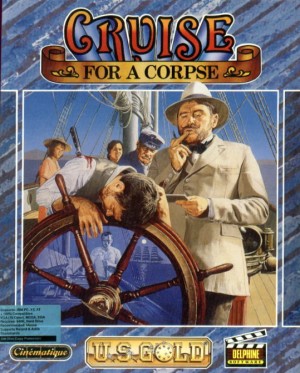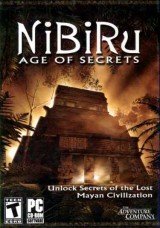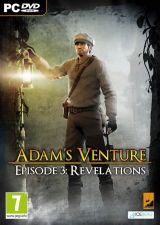Review for The Legend of Crystal Valley

There was a time when fantasy seemed to rule the adventure genre. Since the very beginning with Colossal Cave back in 1976, adventurers have become well accustomed to perilous journeys in the company of elves and dwarfs, dragons and powerful wizards. Games today may be dominated by crime investigations set in our grim, grayish world, but in the genre’s heyday there was many a voyage spent wandering through the bright green landscapes of Daventry, the eerie woods of Mordavia or the whimsical land of Quendor. Unfortunately, aside from a few not-entirely-notable exceptions, there seems to be little room nowadays for endearing fantasy universes full of batty characters, fairy forests, kind giants and cauldron-equipped hags. Into that void, however, steps The Legend of Crystal Valley, the first adventure from independent Croatian developer Cateia Games, and though it doesn’t break much new ground, it does enough things well that it will surely inspire a wave of nostalgia for those genre days of yore. So, it’s time to put on your adventuring cap once again and follow me: I’ll be your guide through the Valley.
The Legend of Crystal Valley starts when a young woman named Eve receives a letter from her father, from whom she has drifted away since her mother died in a car accident years earlier. Standing in front of her mother’s grave during a storm, Eve narrates the letter and two sentences immediately grab her attention: “My end is here now, I see that it is inevitable. All I wish is to see you once more before I sink down into oblivion.” Fearing that her father, still desperate from the loss of his beloved wife Jessica, was planning to commit suicide, Eve rushes to the old family farm, only to find it already empty. Worried for his life, Eve starts searching around for clues that might point her in the right direction and solve the riddle of her father’s sudden disappearance. Soon enough, though, she will find even more answers; answers to questions she didn’t even know to have. Slowly, a bigger picture begins to form and as every new piece falls into place, Eve discovers the many mysteries and secrets of her family, beginning with the dedication her father engraved on Jessica’s tombstone: “The gods did not want us to be together.”
This seems a strange thing to write on a grave, but when Eve falls into a hole concealed in her childhood home and winds up in the land of Crystal Valley, the epitaph proves only the first of many oddities. She soon meets a bizarre creature, sort of a hybrid between a small dragon and a bat; she stumbles upon some unusual-looking rocks she is quite sure aren’t from our world; and when she thinks that nothing could be stranger, she is politely asked for a favor by a tall, slim, green figure: Konoba the butler, a gentle and well-educated valet who wouldn’t look out of place in an old English mansion. Eve may be astonished by the fantastical wonder of the surroundings, but everyone in the little village of Trisgon, a small town built inside the skeleton of a giant hero of the past, seems to greet her without any sign of surprise. As the villagers explain to Eve, they were once very used to visitors from Other Worlds and they haven’t forgotten their good manners. When Eve asks them about her father, they advise her to search for him in The City, the capital of the Valley, where everyone passes once in while. The problem is that a curse has been laid upon the village, and no living soul can cross the bridge that leads to the city. Naturally, it will be up to Eve to help them by lifting the curse and thus proceed on her quest to find her father and solve the mystery of her entire existence.
If you are a longtime adventure gamer, this premise can’t help but feel a little clichéd, and indeed Eve’s adventure bears many resemblances to April Ryan’s longest journey. When Eve first learns about other dimensions, the universal first language and the vital concept of balance, this feeling may grow even stronger but – and it is important to clarify this point right away – the developers were wise enough to avoid any direct similarities. On the contrary, they tried hard to create their own mythology. This is no easy task, since so much fantasy has already been written that it is difficult to find a new perspective. However, drawing on the rich (and severely underused) Slavic folklore and moving away from classic Tolkien-esque stereotypes, Cateia has successfully designed a world that is archetypal enough to make the player feel at home and yet full of unexpected little details capable of keeping the material fresh. For example, dwarfs aren’t the typical long-bearded blacksmiths we are used to, but share characteristics of the leprechauns and some of the domovoi (house spirits of Slavic lore), while giants aren’t the stupid-but-tough villains of tradition, but accomplished engineers, often well-versed in literature and history. The Crystal Valley itself, while surely not as detailed as Middle Earth or even Arcadia, is an intriguing mix of recognizable places like Daventry (especially as portrayed in the early King’s Quest games) and Jonathan Swift’s imaginary kingdoms with a new, unexplored dimension whose particular elements are stirring enough to motivate players to thoroughly explore.
More importantly, the Crystal Valley is brought to life by more than forty characters, all of them entertaining and colorful, mostly well-rounded and often endearing. From the fisherman who is more interested in composing sad ballads with his flute than in fish to the lizard painter who is currently struggling with his 244th self-portrait, the inhabitants of the Valley may not shine for their originality, but they have a quality we rarely find in today’s adventures: a heart; a vivid personality that shines through the often brilliant and always witty writing. Taking the time to speak exhaustively with each of them is amply rewarded by the sheer amount of detail the developers included. For example, when I learned that the motivation behind a local theft was an unrequited gay love, I was impressed by the thoughtfulness shown in addressing such a delicate theme. And this isn’t the only case: when Eve first meets the mysterious Count – about whom I won’t give away any details since he is easily the most accomplished and beguiling character of the game – I was really amazed by the cleverness and subtlety used in approaching some sensitive issues like war and peace, political power and compromises, among even heavier universal subjects like loss, death and the afterlife.
This would usually be the place to discuss how the voice acting serves these characters, but aside from the opening cutscene, The Legend of Crystal Valley has no voiceovers. Like in older adventures, every description and every line is written on screen for the player to read. This choice was obviously dictated by budget contraints, but while for some players this will undoubtedly be a serious drawback, the freedom from economic considerations ended up allowing the developers to concentrate on the quality of the writing itself, and even expand on the usual quantity (I’ll return to this point soon enough). The musical score is sparse but generally provides a soft, atmospheric background to what is happening on the screen without being intrusive. The occasional more prominent theme stands out, like the sad, melancholic orchestration heard in the Count’s Tower or the powerful, almost electronic tunes of the final segments, and these are well-executed and extremely engaging.
Unfortunately, the game’s graphics didn’t fare nearly as well from the budget restrictions. While the backgrounds can be quite nice to look at – and some locations like the sulphuric swamp and the ominous Ziggurat are pleasantly atmospheric – the character models are blocky, and not only do they seem like lifeless puppets standing still, when they move the animation is so clunky that they resemble odd mechanical robots. This wasn’t a problem for me, since I was so drawn in by the story and setting that I barely noticed it after just a few minutes of play, but gamers who place higher importance on graphical expertise will certainly find The Legend of Crystal Valley to be visually unpolished compared to most adventures on the market today.
Those who aren’t deterred by the limits of its production values, however, will find a very solid gaming experience underneath the clumsy graphics. The adventure plays from a third-person perspective and the interface is a straightforward point-and-click: the cursor changes over interactive hotspots and a left-click brings up a small menu with Look and Use/Take options, while clicking the ground will make Eve walk (you can make her run by pressing and holding the space bar, but not double-clicking, unfortunately) toward the appropriate location. A welcome addition is that Eve will instantly travel between two connected locations she’s already visited with a simple double-click, thus avoiding long, boring runs back and forth between locations. There are also many interactive hotspots that can only be examined, and this is where both the quality and quantity of the writing really shine: clicking multiple times on these objects provides not one, but two and often three separate comments from Eve. This isn’t necessary to proceed in the game, but the optional content furthers the depth of the setting and often gives precious insights into Eve’s background and personality. Games don’t usually include this kind of attention to detail nowadays, and I found myself clicking on everything all the way through.
The inventory is easily accessed in a pop-up bar at the bottom of the screen, displayed by a simple right-click of the mouse. In this bar, you’ll find not only the objects Eve is carrying but also a diary that registers every dialogue, plus a spellbook. During her adventure, Eve can learn three different spells, like Telekinesis, that can be useful for particular puzzles. This addition reminded me of the classic Quest for Glory series, where the magic user could use his peculiar abilities to overcome certain obstacles, and it adds considerably to the depth of the gameplay here. Unfortunately, this aspect is somewhat underused, and aside from a couple of occasions where magic use requires some creative thinking, it’s usually quite clear when a spell is required for a puzzle.
Besides the spell-related puzzles (a few of which even have multiple solutions) and the occasional logic-based and mechanical dilemmas which are usually quite challenging, the obstacles are mostly inventory-based, and always neat and believable in their practical solutions. These puzzles often rely on fetch quests that, for once, have been cleverly integrated into the plot. In fact, since the Crystal Valley rules of hospitality always provide for an exchange of favors, Eve is frequently asked for a barter of services. For example, in an enchanted forest, a nearly blind old witch requests three different herbs for her concoction and in the city, a kind florist asks Eve to retrieve a stolen rare plant. When Eve completes such tasks, after a heartfelt thanks her customer will always be glad to help her to the best of their abilities. Once again, while nothing new to the genre in terms of gameplay, it’s nice to see the writers incorporated these challenges into the larger narrative, always rewarding players with a deeper comprehension of the Valley and its inhabitants. My only complaint with the puzzles is that sometimes the game is unclear on how to operate strange machinery, which left me a bit confused.
I completed my trip through the Crystal Valley in about six hours, and while I largely enjoyed the journey itself, I was a bit disappointed by the ending. The game builds up to a nice climax in its final segments, but the finale itself is quite rushed, leaving some minor plot points (mainly details about the overarching mythology) unexplained. Hopefully this means that we will see a sequel in future, and I for one would be glad to revisit the Valley, meet some old friends and maybe even find some answers to questions I still have. The developers have created such a compelling world that I really want to delve even deeper into it. This imaginary world may not be groundbreaking or shockingly original, but it is captivating and well worth exploring if you can overlook the lower production values of its presentation. And if you are a fan of the old King’s Quest series, or you simply can’t resist the charm of an intriguing fantasy adventure, The Legend of the Crystal Valley is the perfect choice for you.


